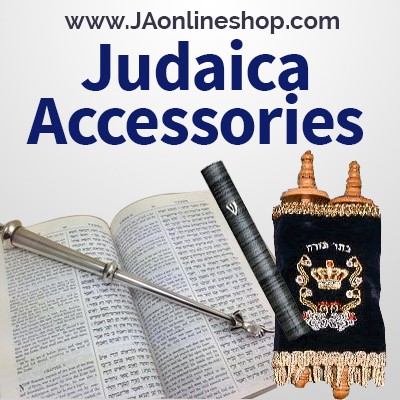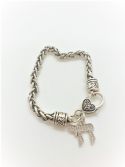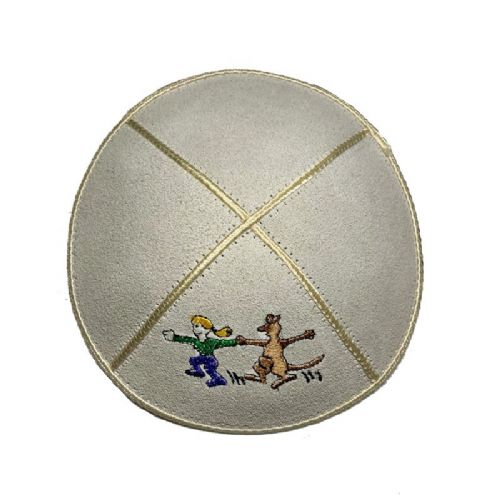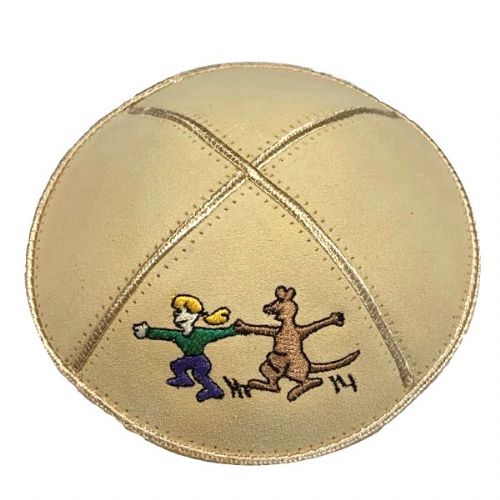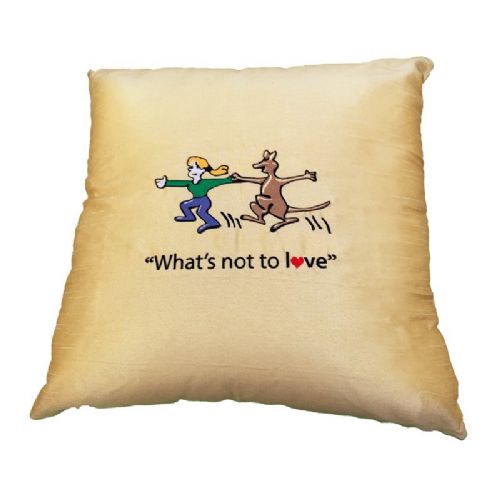Shofar
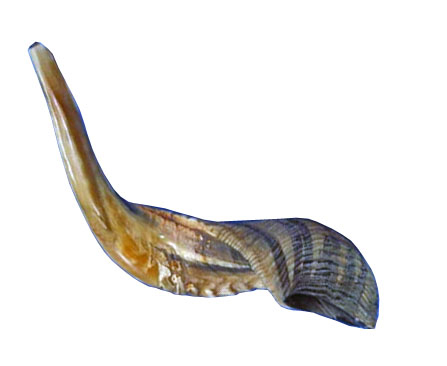
The Shofar, a well known symbol of Jewish New Year - Rosh Hashanah, is one of the earliest instruments used in Jewish music.
Usually made from a rams horn, a shofar can also be made from the horns of other animals, including those of a goat or sheep. It is the one musical instrument that has not changed in over 5,000 years.
In Biblical times the shofar was blown to announce an important event, such as the alarm of war or the coming of peace. The Great shofar is said to have been sounded during the greatest event in all Jewish history, the giving of the ten commandments to Moses at Mount Sinai (which we celebrate as the festival of Shavuot).
The blowing of the Shofar is the only specific commandment for Rosh Hashanah.
The rams horn is blown 100 times.
Shofar Blowing
The blessing before blowing of the Shofar is:
בָּרוּךְ אַתָּה ה' אֱלהֵינוּ מֶלֶךְ הָעולָם, אֲשֶׁר קִדְּשָׁנוּ בְּמִצְוֹתָיו וְצִוָּנוּ לִשְׁמוֹעַ קוֹל שׁוֹפָר.
Baruch ata Adonai Eloheinu melekh ha-olam asher kidshanu b'mitzvotav v'tzivanu lishmoa kol shofar.
Blessed are You, Lord our God, Ruler of the universe, who has sanctified us with His commandments and commanded us to hear the sound of the shofar.
The following blasts are blown on Rosh Hashanah:
Tekiah (תְּקִיעָה) is a single long blast of the shofar.
Shevarim (שְׁבָרִים) is composed of three connected short blasts.
Teruah (תְּרוּעָה) is a string of nine or more short-lived, broken blasts made by the tongue.
Tekiah Gedolah (תְּקִיעָה גְּדוֹלָה) is a very long final blast, may be blown at the end of the sequence.





